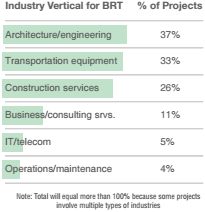Why Cities Are Turning to Vendors to Earn ‘Smart City’ Status

Baltimore, Maryland S.Borisov / Shutterstock.com
Municipalities want to make themselves more ‘livable’—particularly when it comes to transportation, public safety and digital government—per a new report.
Municipalities competing for residents to tax and startups to create jobs increasingly want vendors to improve their “livability” and earn them “smart city” status, according to a new Onvia report.
The Seattle-based government business intelligence company found cities are focused on three major areas of innovation: transportation, public safety and digital government.
From 2010 to 2016, the smart city market’s value will skyrocket from $8.1 billion to an estimated $39.5 billion globally, according to London-based ABI Research.
And more and more municipalities want to implement innovations across departments:
Increasingly, collaboration with agencies involves multiple departments and solutions where the vendor can tailor their offering to better integrate with existing systems and other new solutions being implemented.
Smart transportation innovations offer cities arguably the greatest cost savings while reducing traffic congestion. Bike shares now exist in more than 30 U.S. cities, with smart parking systems and traffic signals on the rise.
Only 19 bus rapid transit systems, using dedicated lanes and off-board fare collection via vending machines, exist in the U.S.—requiring numerous contractors to install and maintain:

Growing demand for police transparency has fueled department adoption of body cameras and gunshot detection—at least 90 U.S. cities using the ShotSpotter system. About 25 percent of the nation’s 17,000 agencies use body cameras, and 80 percent are evaluating the technology, according to the ACLU.
Consumers are driving the push by local governments to become mobile-friendly with apps and platforms supporting smartphone payments. City mobile apps cost an average of $35,400 to develop, with multi-year service agreements common for apps that:
•Replace 311 calls expediting agency response times to fix issues such as potholes
•Share government activities such as legislative updates
•Provide instant alerts for public safety like weather emergencies and traffic incidents
•Provide automated individualized announcements
Digital payments not only reduce municipal governments’ costs but create more users of their services and boost citizen satisfaction—improving overall city livability.
Onvia’s complete report can be read here.
Dave Nyczepir is News Editor for Government Executive's Route Fifty.
NEXT STORY: Augmented reality: Coming to a city near you






